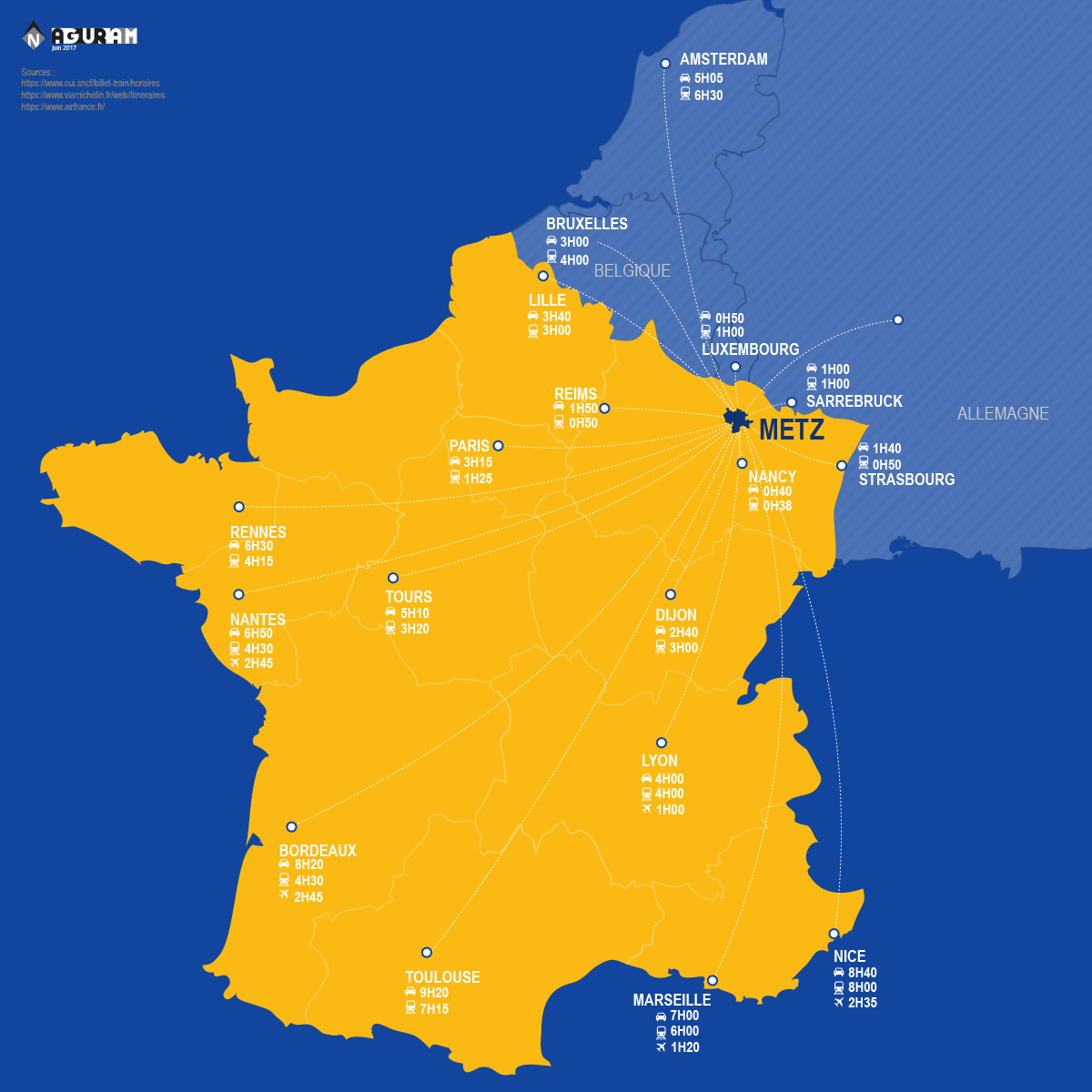Introduction
Fort de Queuleu is part of the first fortified belt linked to the defense of the city of Metz. Construction work began by the French during the Second Empire in 1867, and was largely taken over by the Germans during the first annexation following the defeat of 1870-1871. However, with the construction of Metz's second fortified belt from 1899 onwards, the Queuleu fort lost some of its strategic importance, and was only lightly modified.
During the Second World War, the fort was used as barracks for French soldiers. Following the defeat of 1940, the fort was briefly used as a prisoner-of-war camp (Stalag). Then, between March 1943 and September 1944, the Natzweiler-Struthof concentration camp (Bas-Rhin) set up an annex to the fort, mainly for SS use. Around a hundred prisoners, mainly common Germans and Poles, were attached to the camp. Some took part in work on the Metz-Frescaty airfield.
Between October 1943 and August 1944, a special camp (Sonderlager) run by the Gestapo is set up in Barracks II. Between 1,500 and 1,800 prisoners (men and women) were interrogated and interned there, before being sent to concentration camps (Natzweiler-Struthof, Dachau, etc.), reform camps (Schirmeck) or prisons. The special camp at Fort Queuleu saw the internment of resistance fighters, saboteurs, smugglers, draft dodgers, hostages and Russian prisoners. Most were locked up in overcrowded collective cells, without the possibility of washing, speaking or moving, under the fierce surveillance of SS guards and commandant Georg Hempen. Resistance leaders were isolated in individual cells, dark, damp dungeons to which only the commandant had access. Police officers "industrialized" interrogation and used torture. Internment conditions were terrible, and most prisoners were kept blindfolded, with their hands and feet tied. Thirty-six people died in the fort, and four managed to escape in April 1944.
During the liberation of Metz, the fort came under fire between November 17 and 21, 1944, during fighting between the American army and German troops entrenched in the fort. The fort was bombed and severely damaged before surrendering.
Between December 1944 and March 1946, the French administration set up a "Centre de Séjour Surveillé" (guarded residence center) in the fort. Initially reserved for German civilians and their families, the site was also used to detain administrative internees arrested for collaboration, propaganda, anti-patriotism or denunciation (up to 4,400 people were interned there). It was one of the largest centers of its kind in France. Foreigners of various nationalities were interned here (Germans, Spaniards, French, Italians, Luxembourgers, Poles, Yugoslavs, etc.).
Between 1946 and 1947, a camp for German prisoners of war was set up in the fort. Finally, between 1948 and 1950, Indochinese workers occupied the site.
Located at the entrance to the fort, the monument to the Resistance and the Deportation, inaugurated in 1977, today marks the entrance to this place of remembrance.
Practical Information
- Military heritage
- Contemporary
- NO
- Visit on your own at all times
- Guided tours at all times
- Guided tours with advanced booking
- Yes, partially / with help
- YES
- Offre spéciale ou réduction avec le city pass












